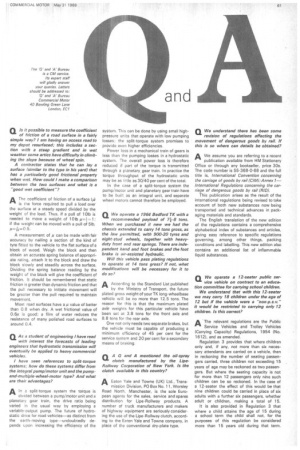Q As a student of engineering have read
Page 63

If you've noticed an error in this article please click here to report it so we can fix it.
with interest the forecasts of leading engineers that hydrostatic transmission will eventually be applied to heavy commercial vehicles.
I have seen references to split-torque systems; how do these systems differ from the integral pump/motor unit and the pumpand-multiple-wheel-motor type? And what are their advantages?
AIn a split-torque system the torque is
divided between a pump/motor unit and a planetary gear train, the drive ratio being varied in the usual way by employing a variable-output pump. The future of hydrostatic drive for road vehicles—as distinct from
the earth-moving type undoubtedly depends upon increasing the efficiency of the
system. This can be done by using small highpressure units that operate with low pumping losses; the split-torque system promises to provide even higher efficiencies.
Power loss in a mechanical train of gears is less than the pumping losses in a hydrostatic system. The overall power loss is therefore reduced if part of the torque is transmitted through a planetary, gear train. In practice the torque throughput of the hydrostatic units may be as little as 30/40 per cent of the total.
In the case of a split-torque system the pump/motor unit and planetary gear train have to be built as an integral unit, and separate wheel motors cannot therefore be employed.








































































































